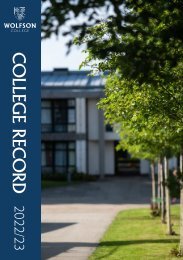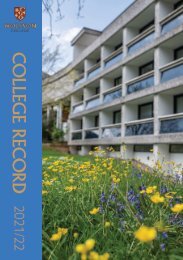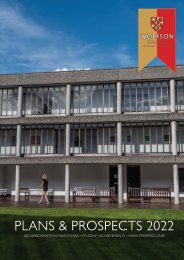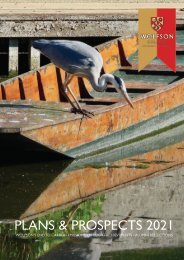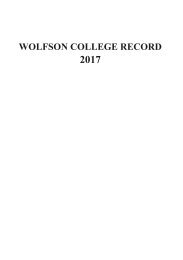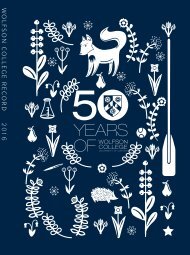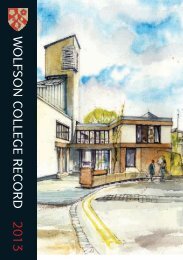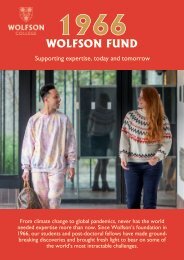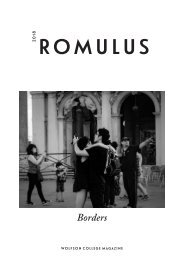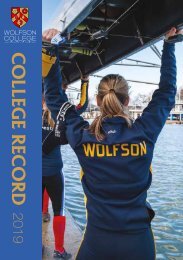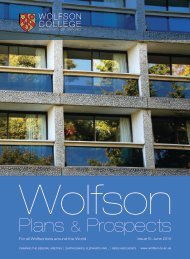Wolfson College Record 2021
You also want an ePaper? Increase the reach of your titles
YUMPU automatically turns print PDFs into web optimized ePapers that Google loves.
A year’s training at the National Film and TV School in 1986–87 – as part of<br />
a special scheme set up by the Royal Anthropological Institute, designed to<br />
deepen ties between the discipline and the media industry – turned out to be<br />
transformative. From the time he arrived at Oxford, Marcus focused his energies<br />
upon the then nascent sub-discipline of Visual Anthropology. Over the following<br />
three decades he went on to establish himself as one of the world’s pre-eminent<br />
scholars in that field, which he re-defined in a long series of publications including<br />
the collections Rethinking Visual Anthropology (co-edited with Howard Morphy,<br />
1997) and Made to be Seen (co-edited with Jay Ruby, 2011), and the book Visual<br />
Methods in Social Research (2001).<br />
Personal News<br />
Beginning with studies of Indian iconography, but moving on to a range of other<br />
examples as well, Marcus’ contribution was to show how visual production should<br />
never be analysed as a ‘peripheral’ activity, the domain of a specialised group of<br />
individuals (‘artists’). Rather, the making of visual artefacts (of all kinds) should be<br />
thought of as a central – perhaps the central – means through which all people,<br />
everywhere, forge their identities, and order and transform the social and political<br />
worlds around them. In short, his interest was in the possibilities of image-making<br />
as a mode of cultural expression. Writing largely in an era before Facebook,<br />
Instagram, and other kinds of social media had become commonplace, his ideas<br />
were well ahead of their time, and in many ways anticipated the effects of the<br />
visually and media-saturated worlds in which we all now live.<br />
86<br />
It was not only Marcus’ research that was ahead of its time. So too was his<br />
teaching. At a time when Oxford’s anthropology syllabuses were still marked by<br />
the legacy of structuralist theories – with their emphasis upon such concepts as<br />
rules, roles, offices, and obligations – from early on Marcus’s teaching centred<br />
around refreshing new ideas of post-colonial theory, of de-construction, of<br />
the ‘new’ gender and queer theories. His textbook Ethnicity: Anthropological<br />
Constructions (1996) was equally forward-looking. It remains in common use for<br />
university courses on that subject, even today.<br />
All of this innovation, combined with Marcus’ personal charisma and generosity,<br />
endeared him to successive generations of students who went through ISCA’s taught<br />
Master’s programmes. He also built up strong loyalties amongst many generations of<br />
the Institute’s growing numbers of doctoral students (of whom I was one).<br />
Marcus was as supportive and committed a member of his college as he was to<br />
the other communities to which he belonged. He quickly became a stalwart of<br />
the <strong>Wolfson</strong> <strong>College</strong> community. Scrupulously calm, balanced and erudite in his<br />
advice and judgement on all matters, Marcus quickly gained the trust of the wider<br />
college record <strong>2021</strong>



